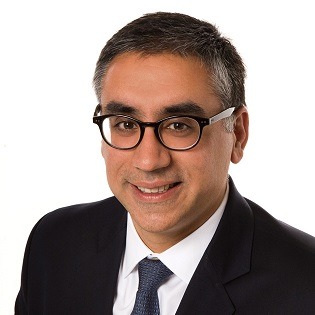The benefits and challenges of risk stratification research in spinal surgery were explored in detail during the 2016 International Meeting on Advanced Spinal Techniques (IMAST; 13-16 July, Washington, DC, USA) with presenters noting again and again the difficulties in translating “big data” conclusions into good clinical outcomes. The potential yield of such data was generally agreed to be significant, across talks focusing on its impact on spinal surgery in individual countries, on payers and on patients themselves. The challenges of maximising these datasets across different countries—and even smaller regions—with different default treatment strategies, different payment systems, and different access to healthcare, were shown to be daunting—but not necessarily insurmountable.

Steven Glassman (Louisville, USA) presented the results of his team’s efforts to combine risk stratification models from Denmark (DaneSpine), the USA (N2QOD) and Japan (JMSD), asking the question, “Is risk stratification a universal language?” Glassman asserted that by pooling different datasets, researchers might be able to address the different levels of granularity and generalisability found in administrative, society-based and study group data.
Characterising risk stratification as “Identifying demographic characteristics and co-morbidities that are likely to predict complications and clinical outcomes”, Glassman noted, “Although it sounds as though it would be complicated…it is what we do every day in the office when we look at a patient.” It will be “key” in the assessment of patients, and in decision-making, Glassman said.
The three nationwide databases chosen were assessed for predictors of hospital readmission and surgical site infection. The research team initially tried to pool the three registries, in an attempt to assess the feasibility of combining local data into a useful global dataset. Whilst there was a reasonable amount of overlap between the three registries, they had all collected slightly different sets of variables. Results were compared for 30-day readmission rates and surgical site infection, with each database revealing different predictive factors. The US database found American Society of Anesthesiologists grades to be predictive of readmission, with gender and the number of levels fused predictive in the Japanese and Danish registries, respectively. For surgical site infection, only the Japanese database revealed predictive factors; gender, diabetes and length of stay. When data were pooled, the biggest predictive factor for 30-day readmission was in fact which database an individual appeared in (p=0), with gender (p=0.011) and employment (p=0.03) following. Similarly, the researchers found a paucity of significantly predictive factors for surgical site infection, with database (p=0), length of stay (p=0), gender (p=0.001) and body mass index (p=0.001) the strongest predictors.
Glassman cautioned against pooling international data, and even national data in countries with a low level of population homogeneity—such as the USA. A subtle approach is needed, rather than simple aggregation, he claimed, stating, “Differences in the underlying cohort seem to outweigh the individual patient variables or drivers of risk.” He advised, “We probably need to have more consensus on diagnosis, more uniform demographic data, and probably a core set of outcome measures,” concluding that “risk stratification models from one country just may not be applicable to other countries.”

The importance of maximising these kinds of registry was the focus of a number of talks during IMAST’s “Modern Perspectives on Spine Care” session. Benny Dahl (Copenhagen, Denmark) detailed his successful experiences with the Spine Adverse Events Severity System (SAVES; for recent results of Dahl and colleagues’ work, see SNI 38, p11). Calling “big data”, “the future”, he emphasised the importance of collecting “non-surgical” patient outcomes data alongside clinical and radiographic records in complex patient populations.
“At least in our healthcare system,” Dahl said, “there is a high focus on transparency of outcomes—not only related to mortality, but to healthcare-related quality of life”. A big challenge for physicians practicing this kind of registry-building is who has control over results data, Dahl claimed, saying, “We will have to be very, very specific regarding risk stratification when reporting these data—and be ready to read the criticism of some of our treatment results.” This concern echoed a potential benefit described by Glassman, who had said of proper risk stratification reporting, “It is a way to level the playing field, so that the doctors doing very hard cases are not compared head-to-head with doctors who would only be doing simple cases.”
Rajiv Sethi (Seattle, USA), another symposium presenter, queried the applicability of risk stratification efforts like SAVES, to multiple-payer regions like the USA, “with different parameters” for success. Dahl responded by saying “I do not think you are doomed.” He emphasised that transparency extended beyond national single-payer systems, and that “input from different payer systems” may require different methods of treating data. Successful transformation of “big data” into hard results on an international scale remains elusive.

Two further presentations at the session queried the ability of risk stratification data to help navigate healthcare in value-based systems. Marinus DeKleuver (Amsterdam, the Netherlands), concentrating on spine problems in the elderly, emphasised the importance of making sure that outcomes data properly take into account whether a procedure will be worthwhile for the patient. Risk assessments and clinical outcomes predictions, he cautioned, are not enough to comprehensively assess value as outcomes-per-cost for individual patients. He suggested a “smallest worthwhile effect” determination as a novel way to generate “estimates in terms of worthwhile effects, rather than the outcome of intervention alone.” Giving the example of a 15-point potential improvement in Oswestry Disability Index, a patient may consider physical therapy to be worthwhile. Major deformity surgery, however, may not seem an option worth the risk. Outcome, DeKleuver argued, while “significantly driven by all three aspects of the biopsychosocial model,” is “much more driven by psychosocial metrics…more than we appreciate.” “Certainly,” he says, “they drive it more than the X-ray.”

Rajiv Sethi continued the theme of value in healthcare, emphasising the importance of proving value amongst rising costs. “When purchasing healthcare [in the USA] as an employer, both quality and price are completely under the table,” he said, highlighting a lack of transparency, predictability and accountability in healthcare. Stressing the importance of exploiting risk stratification data, he considered the case of degenerative spinal deformity. “We will be inundated with these cases, and we need to figure out a better paradigm for how we treat these patients…how do we choose surgery effectively?” “Big data”, he stated, could be used to predict whether treatments offer “high value” or not, with “low value” procedures offering nil benefit, or benefits lower than costs.
Where physicians and hospitals have failed to move healthcare forward, he claimed, large employers are driving reform. Citing a 2015 New Yorker article by general surgeon Atul Gawande (Boston, USA), Sethi explained how companies like Wal-Mart are exploiting the low complication rates observed at its chosen “centres of excellence”—including Sethi’s own practice, the Virginia Mason Medical Centre in Seattle—to maximise the value of the healthcare it purchases for its employees. By leveraging “bundle” deals, including food and hotel costs, it can save money on insurance premiums for its vast workforce. Wal-Mart is concerned not simply with ensuring good clinical outcomes, but rather with prioritising variables such as return-to-work time. Rather than treating patients according to clinical parameters, Gawande reports, procedural value comes from the ability of a procedure to keep a patient in work, and at a low risk of future readmission. Costly fusion surgeries—like for DeKleuver’s patients—may not be the most “worthwhile” option, given their potential risks. Improving predictive analytics, Sethi argued, are a necessasary part of maximising patient selection and ensuring “high-value” interventions. Sethi also discussed the “Seattle spine team approach” and the use of multidisciplinary clearance protocols enfranchising the opinions of multiple providers—including non-surgeons via a required preoperative clearance conference. Sethi argued that such algorithms would enhance the viability and value of adult deformity surgery as evidenced by their published outcomes.
Risk stratification was highlighted at IMAST as a means to potentially yield far better outcomes, allowing physicians to better meet increasing rates of low back pain and spinal deformity. Whilst the benefits of big data could be meaningful, many hurdles need to be overcome in order to properly utilise these assets, according to the presenters. From international standardisation, to the cultivating of good outcomes recording practices, big data in its current state was not presented as a “universal language”. According to Glassman, however, such good risk stratification practice could “really facilitate more meaningful statistical analysis.”











